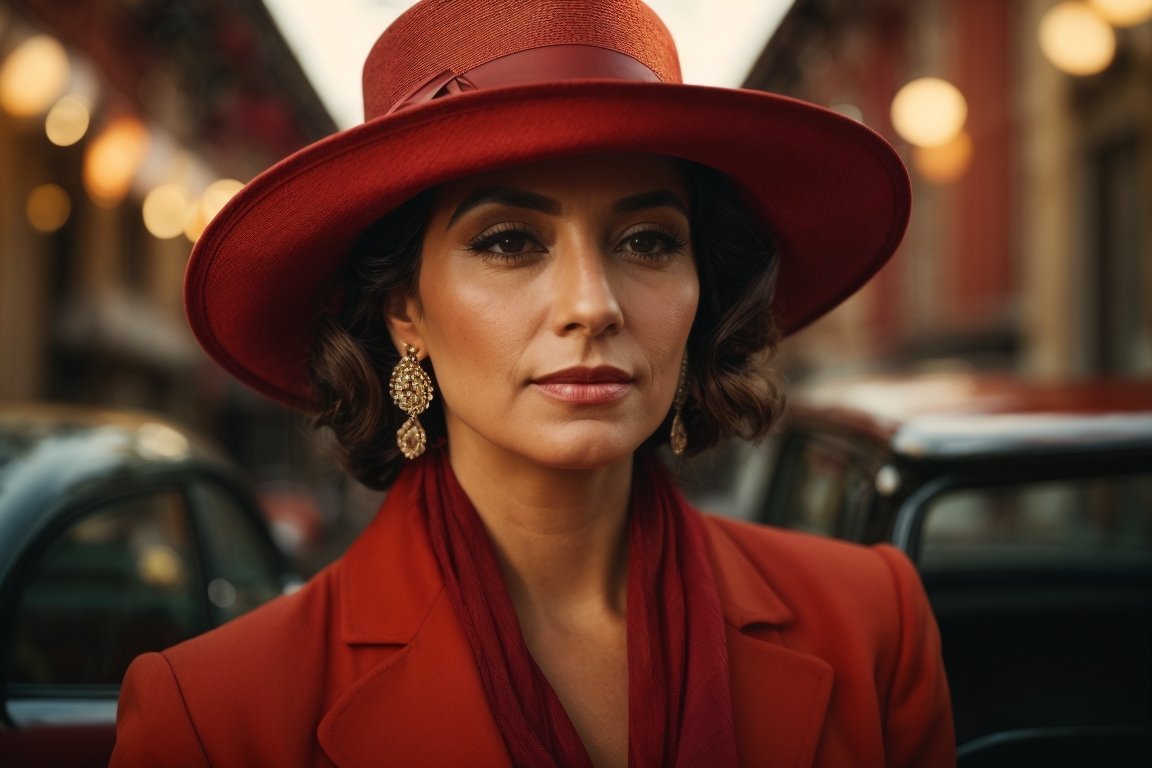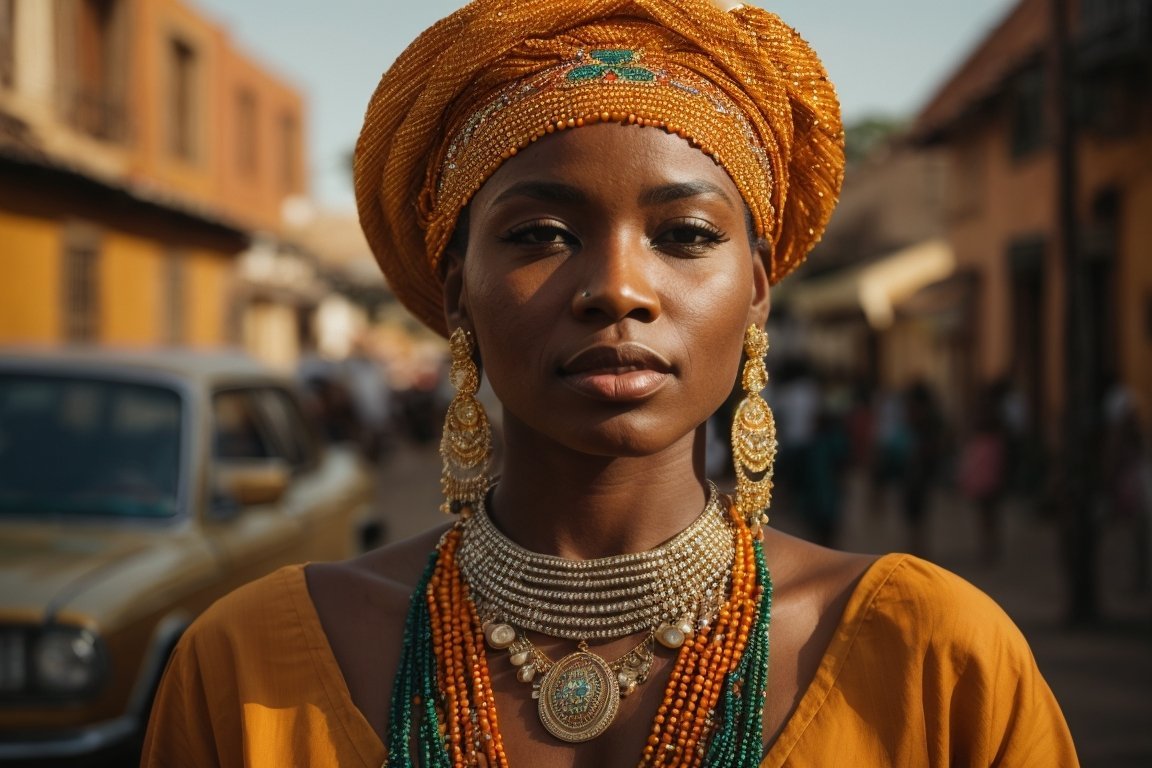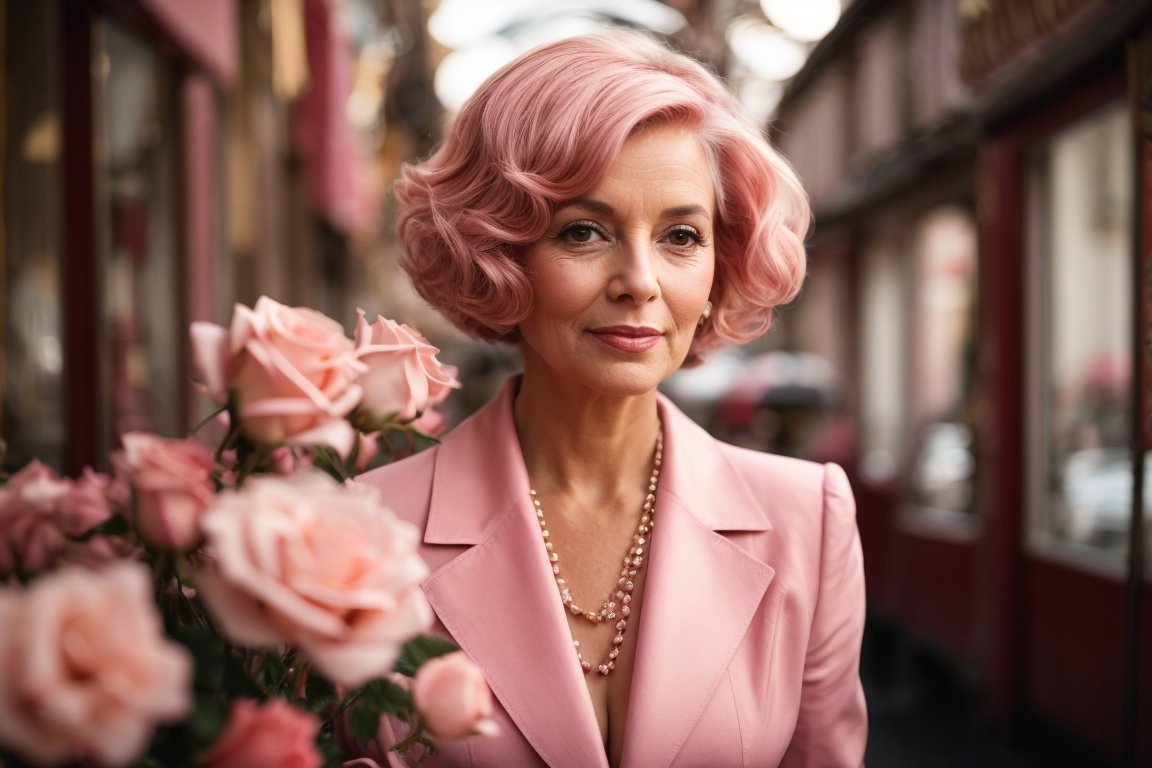Key Takeaways
- Color trends evolve over time, reflecting cultural shifts and innovations in dye technology. Understanding color history provides context for current fashion.
- Primary colors like red, blue, and yellow formed the basis for early dyes. Mixing primary shades creates secondary colors like purple, orange, and green.
- Ancient cultures valued colors like purple and saffron for their rarity and association with royalty. More common colors like earth tones reflected the working class.
- The Industrial Revolution brought new synthetic dyes that democratized bright shades. Colors took on political meanings, like red for communism.
- Hollywood films and the rise of Technicolor in the 1930s made color an integral part of fashion and visual culture.
- Youth counterculture movements in the 1950s-60s embraced colors as symbols of rebellion and liberation. Tie-dye, neons, and clashing brights became statements.
- In the 1970s, earth tones and muted shades reflected postmodern skepticism and economic recession. People toned down color in everyday wardrobes.
- The 1980s saw a full-throttle return to bright, neon shades. Power suits went bold with strong primary colors.
- Minimalism in the 1990s favored black, white, and neutral colors. Muted hues like olive and slate gray reflected grunge style.
- The 2000s revived 1960s retro brights, florals, and eccentric color combos. Vintage looks mashed up with multiple color palettes.

The Evolution of Dye Technology
For most of human history, clothing color depended on natural pigments derived from plants, minerals, and animal byproducts. The earliest dyes came from roots, berries, leaves, and bark. Red ochre clay created an earthy orange shade. The cochineal beetle produced crimson red. Fermenting indigo leaves yielded blue. Saffron from crocuses created brilliant yellow.
Natural dyes historically had several limitations. Their colors tended to fade rapidly when exposed to sunlight or repeated washing. Certain dye shades were rare and costly, making them exclusive to royalty and those who could afford such luxury. In contrast, ordinary people depended on more accessible textiles, such as undyed linen and wool, or garments dyed with simple earth tones and natural pigments.
The Industrial Revolution fundamentally changed color in fashion by inventing synthetic dyes. In 1856, scientist William Perkin accidentally discovered the first aniline dye, a vivid purple called mauveine. This kicked off a “rainbow famine” as chemists raced to produce new artificial tints that were cheaper and longer-lasting than natural dyes.
Vibrant greens, electric blues, and bright reds transformed late 19th-century fashion, as vivid colors brought new energy to modern clothing styles. These striking shades were made possible by synthetic aniline dyes, which revolutionized textile manufacturing. However, the use of toxic chemicals in aniline dye production posed serious health risks for garment workers. Despite these dangers, synthetic dyes quickly became widespread by the early 1900s, making bold and affordable colors available to the general public and forever changing the landscape of fashion.
The Psychology and Meaning of Color
Beyond aesthetics, color also carries psychological and cultural meaning. Warm hues like red, orange, and yellow convey energy, passion, and cheer. Cool tones like blue, green, and violet have calming, soothing effects. Dark shades connote sophistication and mystery, while pale tints represent youth and innocence.
Context shapes color symbolism, too. In the West, white signifies purity and weddings, while in Asia, it represents mourning and death. Red evokes love on Valentine’s Day and danger on stop signs. Green signals go nature and Irish pride. Brands use color to capture desired associations, like Tiffany’s blue for elegance or Target’s red bullseye for affordability.
Although personal preference is important, color trends often reflect the broader social climate. In periods of economic growth and optimism, bright and vibrant colors dominate fashion and design. Conversely, during times of war, recession, or social unrest, darker and more muted hues become popular, reflecting the prevailing mood of seriousness. Colors not only mirror societal changes but also influence cultural attitudes and trends.

Purple Reign: The Ancient World
Back in antiquity, purple stood above all other colors as the defining shade of luxury and status. Derived from rare sea snails, purple clothing denoted wealth and royalty. In Rome, rulers wore the rich hue as an exclusive symbol of imperial power. The dye was so prized its use was legally restricted.
Purple clothing features prominently in ancient Greek and Roman art, highlighting its historical significance. Cleopatra, the famous Egyptian queen of the Ptolemaic Kingdom, adopted purple as her signature color, symbolizing her royal status. In ancient China, emperors wore black hats adorned with a purple fringe, distinguishing themselves from others. Across many cultures, the color purple has long represented extravagance, nobility, and ambition, making it a powerful symbol in the history of fashion and royalty.
Saffron was a highly prized color symbolizing royalty and luxury. Derived from hand-harvested crocus stamens, this golden-yellow spice was valued not only for its medicinal properties but also for its ability to dye fabrics a rich, distinctive gold. Persian nobility and Greek aristocrats showcased saffron-colored garments as a mark of high status. In India, Buddhist monks wore saffron robes to represent spiritual enlightenment, further highlighting the color’s cultural and religious significance.
For commoners, undyed natural wool and linen provided humbler everyday wear. Simple brown and beige from plant dyes offered inexpensive color. Rich shades remained mostly out of reach for ancient plebeians trying to survive, not make fashion statements. Clothing color visibly distinguished upper and lower ranks.
Seeing Red: Color Symbolism Through the Ages
Red holds an ambiguous place in color symbolism. Its bold energy speaks of passion, excitement, anger, or danger. Red dazzles the eye more than any other hue, conveying power and seizing attention, for better or worse. The pigment’s roots come from ochre clay, cochineal bugs, madder roots, and later synthetic alizarin crimson.
In pagan rituals, red ochre represented life, blood, and fertility. Ancient Egyptians and Africans embraced adinkra red in mourning ceremonies. Hindu and Chinese brides traditionally wore red as an auspicious omen of marriage. Cochineal’s crimson distinguished Roman nobility before imperial purple.
The devil and scarlet “woman of ill repute” carry red’s sinful connotations. But red also depicts love, luck, and success. China’s red represents prosperity and celebration. Giving red envelopes conveys wishes for good fortune and joy. Western use of red for Valentine’s Day and lingerie suggests romance and sexuality. Red conveys strong emotion for right or wrong.
Later, red took on political hues. During the French Revolution, radicals embraced le drapeau rouge contrasted with royalist white. Communist regimes adopted red imagery from the Soviet hammer and sickle to Chairman Mao’s Little Red Book, symbolizing workers’ struggle. Today, red still screams for attention across media, marketing, and fashion.

How Blue Became Fashion’s Go-To Color
Blue distinguishes itself as the world’s most popular color, according to surveys. Relaxing, cool, and timeless, blue suits a variety of styles. But blue only emerged as a fashion staple relatively late in color history, thanks to technical challenges in creating stable dyes.
Natural indigo held an early monopoly on blue. Derived from a tropical shrub, indigo dye required time-consuming vat fermentation. Japanese craftsmen perfected indigo-dying techniques to create coveted kimonos and textiles. But indigo often rubbed off, leaving clothes faded.
Synthetic blues arrived in the mid-1800s, including French ultramarine. Newly vivid, wash-proof blues became wildly popular. Picasso and Braque sparked a denim craze in the art world. Coco Chanel launched nautical-chic styles. Blue collars signaled workingmen’s jumpsuits. America fell for blue jeans-wearing cowboys in Western films.
More subdued than red or yellow, blue suits a wide range of ages and skin tones. Crisp navy, powdery pastels, or washed denim exudes casual cool. Blue now dominates every sector of fashion. From business suits to jeans to accessories, across gender and culture, blue earns fashion’s #1 spot.
How Indigo Changed the World
Rarer than purple but more abundant than crimson, indigo democratized blue. Traditional Japanese dye masters elevated indigo dying into an art form, but India led production as the center of the global indigo trade. By the 1800s, Indian indigo accounted for 95% of the British dye market, becoming the colony’s second most valuable export after opium.
Indigo crossed cultures, classes, and continents. West Africa incorporated the dye into traditional textile designs. Central and South American peoples used Guatemalan indigo to color Mayan shawls and Aztec fabric. British settlers exported indigo to America and the Caribbean. The UN even named indigo dye a protected world heritage.
This blue revolution followed the slave trade route as low-cost indigo supplied Europe’s booming textile industry. Today, technology supplants hand-dying traditions, but indigo’s cultural impact endures in blue jeans, Shibori art, and Kasuri patterns that circle the globe in a blue wave.
Orange You Glad: Reveling in Earth Tones
Earth tones draw from nature’s bounty, blending brown, beige, orange, and yellow hues from plant and mineral dyes. Clay, oxides, ochres, umbers, siennas, and other iron-rich or organic compounds create soft, muted shades. In prehistory, earth pigments colored cave paintings and tribal rituals.
Warm, earthy color symbolized the hardscrabble life of peasants and commoners in the Middle Ages. muddy woolens and simple homespun linens and leathers made up coarse rustic dress. But orange held hints of prestige tracing back to saffron finery. Carrots, orchil fungus, and marsh fleabanes offered orangey alternatives more humble folks could grow or forage locally.
Later, mass production of aniline dyes like alizarin opened up fiery orange and ochre for strident 1970s palettes. However, earth tones maintain an enduring allure. Ubiquitous khakis, rustic terracotta, nurturing umber, and grounded sienna-earth colors provide a familiar, comfortable vocabulary. Like a favorite cozy sweater, earth tones enjoy reliable appeal.
Green with Envy: Pigments from Nature
Organic compounds yield to nature’s rainbow, tinting textiles green, violet, red, and more. In medieval scriptoria, illustrators hand-ground malachite and azurite for vivid manuscript pages. Mauveine’s discovery ushered in synthetic aniline dyes, but natural pigments still color clothing today.
Chlorophyll makes leaves green. Crushing plants extracts the chlorophyll to dye fabric. Nettle, onion skins, spinach, and other weeds create eco-friendly dyes. Boiling with iron mordants darkens hues.
Lichens thrive symbiotically on rocks and trees. They contain dyes like archil and cudbear that produce orchil purple and red-violet colors. Tartan plaids and Harris tweed use lichen dyes.
Red onion skins yield golden browns to reddish-orange shades. Yellow onion skins dye yarns ochre and olive green. A cheap, accessible peasant dye, boiled-onion hues now appeal as natural vintage tones.
TEMCO dyes commercialize plant colors for modern artisan use. Pine cones, rhubarb leaves, marigold flowers, avocado pits, and black beans dye protein fibers like wool, silk, and alpaca yarn, avoiding synthetic chemicals.
So whether crushing walnut husks or simmering cochineal insects like ancient Mayans, creative dyers keep discovering nature’s colors anew. Eco-conscious designers increasingly value these traditional organic techniques.

Yellow Fever: Cheerful, Playful, Optimistic
Sunny, joyful yellow shines lighthearted optimism. In color theory, yellow energizes the spirit, awakens mental activity, and boosts confidence. From bright marigolds to mellow dandelions, yellows uplift mood.
Saffron robes shimmered exclusively and were prestigious to ancient Indian nobles. Medieval illuminated manuscripts used safflower and weld for golden accents. Canary yellow burgeoned as a fashionable 18th-century silk. Daffodil and primrose prints charmed Victorian ladies.
Butter yellow gingham sundresses, taxi cab colors, rubber ducky bath-time; yellow accompanies youth and innocence. Post-WWI daisy appliques and yellow-check “Gatsby” flappers exuded giddy Jazz Age optimism during boom years, echoed in the economic prosperity of the 1950s.
Turning cautionary, yellow marked medieval Jew’s mandatory badges, echoing Judas’s betrayal. Yellow journalism sensationalized 19th C scandals. Yellow “polka dot” dresses branded “loose” women in the risqué 1920s. Cowardly and deceitful, yellow signifies weakness or deceit when muted by fear and darkness.
Vibrant yellow makes a confident color statement. Associated with sunny joy, hope, and friendship, a yellow outfit projects cheery fearlessness.
Violet’s alluring mystique
Regal purple captivated ancient nobility, but violet also held exotic appeal. Roman empresses fashioned wigs of violet hair to pose as Venus, the goddess of love and beauty. Cleopatra lined her eyes with purple powder, introducing lavish eye makeup to the world.
Rare sea snail dye conceived imperial purple, but lower classes made do with blue indigo over-dyed red to create heliotrope, dahlia, amethyst, and iris hues. Violet flower blooms like violets, lavender, lilac, and thistle added floral overtones. Biblical hyssop, urn lichen, and dried roots like madder created purple shades from nature.
Surpassing purple to reign as spring’s color in 1912, parasols and hats bloomed in violet and mauve. Paul Poiret and Henri Matisse dressed models in lilac tunics. Victorian mourning’s black crepe gave way to healing lavender. Violet-scented cosmetics and perfumes bottled exotic allure.
Violet’s intimacy enhances visionary powers in magic and mysticism. Violet calms nerves, soothes headaches, and eases insomnia. Celestial and spiritual violet flows from religious meditation to divination. Mysterious twilight tones inspire inner awakening and transcendence.
Make Way for Millennial Pink
Pink used to be the darling color of little girls, cotton candy, and hyper-feminine Barbie Dreamhouses. But lately, pink has broken out of that childish bubblegum ghetto to evolve into a power color for the 21st century. Welcome to the age of Millennial Pink.
While pink held traditional gender connotations, Millennial Pink reflects more complex modern identities. This muted tone straddles boundaries, appealing across genres and orientations. Neither too masculine nor too feminine, neither child’s play nor embarrassingly girly.
Millennial Pink dominates home decor, urban fashion looks, and digital design. The soft hue projects approachable sophistication. Mixing pink and red undertones, the shade flatters varying skin tones. Unisex brands like Acne Studios and J Crew appropriate pink for casual cool. Named for the trend-setting Millennial demographic, this versatile “revolutionary” pink has come of age.

Rainbow Brite: Color in the Digital Age
21st-century digital culture pushes color to the extreme. Rainbow hair and candy raver pastels turn the human body into a moving palette. Augmented reality tints perception prismatic. Neon internet graphics assault the eyes. Reality TV saturates interiors in unicorn pinks. Are electronics altering our color senses?
Hyper-luminous hues and filters digitally manipulate appearances, making the unreal seem credible. But rainbow bright colors overwhelm the brain’s perceptual circuits, causing fatigue. In response, minimalism balances dazzling color with restful beige.
Color will only grow more extreme and manipulated as technology evolves. Yet, for all the overload, the primitive pleasure in color endures. From Stone Age ochre to Space Age neon, color attracts the human eye while evoking emotion. Like music, color’s sensory stimulation transcends time. While fads fade, elemental color intuition persists.
A Brief Timeline of Color in Fashion
- 30,000 BCE – Prehistoric peoples used red ochre and charcoal pigments for cave painting rituals
- 2500 BCE – Royalty wore purple and saffron-dyed garments in ancient Mesopotamia
- 1400 BCE – Blue, indigo dyes and tie-dyed fabrics develop in Egypt and the Middle East
- 400 BCE – Chinese alchemists invent colorfast blackberry/iron dyes
- 300 BCE – Japanese craftsmen perfect hand dying with indigo to create kimonos
- 100 BCE – Romans import purple and crimson dyes for imperial regalia
- 1200s – European nobility wore blue woad and rich red to denote status
- 1400s – Renaissance fabrics favor vermillion, emerald, cobalt, and saffron tones
- 1600s – Baroque patterns embrace fabric dye innovations in fiery reds and blues
- 1700s – Pastel silks in lemon, rose, and mint become fashionable in the Rococo period
- 1868 – William Perkin creates the first aniline dye, mauveine purple
- 1880s – Vibrant emerald greens strike arsenic dyes; yellow picric acid dyes are toxic
- 1890s – “Rainbow famine” as chemists churn out affordable synthetic dyes for all
- 1900s – Navy, indigo denim, and khaki emerge as twentieth-century staples
- 1930s – Hollywood films use saturated Technicolor dyes in costume design
- 1950s – Youth culture rebels rock black leather jackets and candy pink cars
- 1960s – Neons come out for mods, hippies, and psychedelic designs
- 1970s – Earth tones, olive, mustard, rust, and avocado dominate hippie style
- 1980s – Electric blue, shiny metallics, and power suits go bold
- 1990s – Grunge flannels, martial greens, and ash gray suit the slacker generation
- 2000s – Retro brights and eccentric “geek chic” colors rebel again
- 2010s – Millennial pink and muted hues reflect soft contemporary minimalism
The Psychology Of Color in Fashion
The color choice reflects internal attitudes. Here’s what different hues signal:
Red makes a bold, passionate statement. Youthful and energetic.
Orange projects an optimistic, casual mood. Friendly and playful.
Yellow looks lively, fresh, and confident. Cheery happiness.
Green coolly blends nature, wealth, and renewal. Growth and harmony.
Blue suggests calm, wisdom, and intelligence. Peaceful contemplation.
Violet seems intuitive and imaginative. Mystical spirituality.
Pink reads gentle, comforting, and romantic. Caring femininity.
Brown feels grounded, reliable, and humble. Honest simplicity.
White conveys cleanliness, purity, and innocence. A fresh blank slate.
Black indicates seriousness, sophistication, and mystery. Dramatic elegance.
Gray appears detached, moody and distanced. Aloof neutrality.
Gold inspires prestige, success, and extravagance. Opulent luxury.
Of course, personal experiences and cultural contexts shape color meanings, too. But in broad terms, hue choices reflect inner states of mind – feelings we may only semiconsciously register when getting dressed each day. Paying attention to color psychology reveals deeper insights about identity.

Conclusion
From prehistoric ochre to postmodern neons, the history of color in fashion ultimately traces humanity’s relentless pursuit of beauty.
Across cultures and centuries, clothes capture color’s sensory pleasure and psychological power. With new synthetic dyes, innovative technologies, and shifting cultural norms, the palette continues to evolve.
By understanding the rich symbolism and history behind colors, we gain a deeper appreciation for how color choices express identity.
While fads fade, the elemental human attraction to color endures as an essential part of clothing’s magic.
Summary Table
| Color | History | Symbolism | Fashion Examples |
|---|---|---|---|
| Red | Ochre, cochineal, madder root | Passion, seduction, danger | Power suits, red carpet gowns |
| Blue | Indigo, woad, synthetic ultramarine | Serenity, wisdom, reliability | Jeans, nautical stripes, military uniforms |
| Purple | Rare royal sea snail dye | Wealth, extravagance, nobility | Medieval gowns, imperial robes |
| Green | Malachite, natural plant dyes | Nature, renewal, vitality | Sustainable fabrics, aviator jackets |
| Yellow | Saffron, tartrazine, acacia | Joy, optimism, intellect | Sunny sundresses, yellow rain slickers |
| Pink | Crushed flower rose madder | Femininity, sweetness, charm | Cashmere sweaters, Millennial Pink |
| Orange | Carrots, marshes, clay | Friendliness, creativity, fun | 70s earth tones, color-block athleisure |
| Black | Charcoal, iron oxide pigments | Sophistication, seriousness | Little black dress, black tie events |
Frequently Asked Questions
How did the ancients dye fabric?
Natural pigments from roots, berries, minerals, and insects created the first textile dyes, producing purple, yellow, green, red, brown, and orange hues. Plant substances included indigo, madder, and weld.
When did synthetic clothing dyes emerge?
William Perkin’s 1856 discovery of the artificial purple dye mauveine sparked the development of the first aniline dyes synthesized from coal-tar derivatives. By the 1880s, synthetic dyes revolutionized clothing color.
How did blue become so popular in fashion?
With Natural indigo’s inconsistent durability, the 18th-century quest for better blue dyes led to innovations yielding vivid, colorfast synthetic blues like ultramarine. New reliable blues then exploded in denim, uniforms, and casual wear.
What made purple the color of royalty?
The rarity and labor-intensive production of Roman imperial purple, derived from tiny mollusks, meant only the very wealthiest could afford purple garments, cementing its regal status.
How did red evolve in meaning over time?
Red symbolized fertility and vitality in pagan cultures, sin in Christianity, nobility and luck in China and India, passion, political radicalism, and extreme emotion from boudoir to battlefield.
Why do people wear black for mourning?
Black absorbs light, creating a sobering dark veil of mourning and reflecting grief’s heavy emotions. At the same time, black signals dignity, respectability, and solemnity at funerals.
How did fashion trends spread historically?
Elite culture influenced aspirational clothing for the middle classes. Trade, colonialism, and innovations like synthetic dyes then democratized luxurious colors. Media and marketing globally circulate styles today.
What makes Millennial Pink unique?
Millennial Pink departs from childish bubblegum pink, displaying a muted, sophisticated adult tone at the crossover of masculine/feminine and online/organic aesthetics.
Why does color matter in clothing?
Beyond aesthetics, color actively affects psychology, mood, and cultural perceptions. Attention to color choice allows us to craft messaging and manage impressions conveyed through personal style.

Gabrielle J. Smith is the pulsating essence that brings life to the world of fashion and color. With an innate talent for understanding the nuances of hues, she has the uncanny ability to paint narratives with her words, diving deep into the realm of color trends and the art of harmonizing them. Not just an expert in the field, Gabrielle also plays a pivotal role in strengthening the cohesion of our team, ensuring growth and harmony. Each of her articles is a testament to her passion, weaving captivating tales that resonate with readers and fashion aficionados alike.
Reviewed By: Joanna Perez and Anna West
Edited By: Lenny Terra
Fact Checked By: Matthew Mansour
Photos Taken or Curated By: Matthew Mansour
